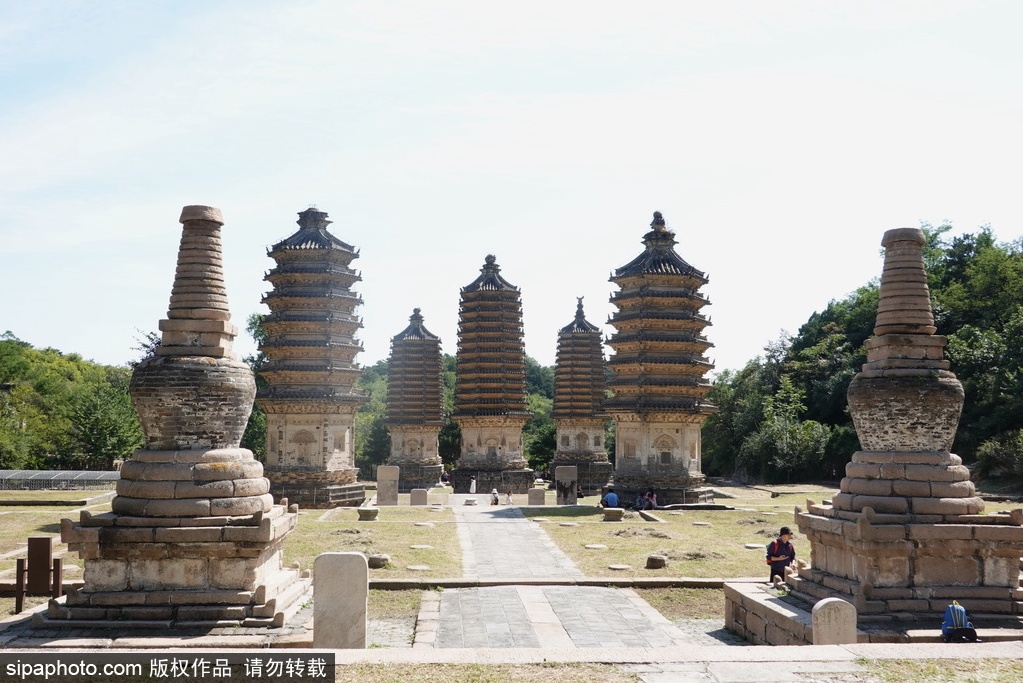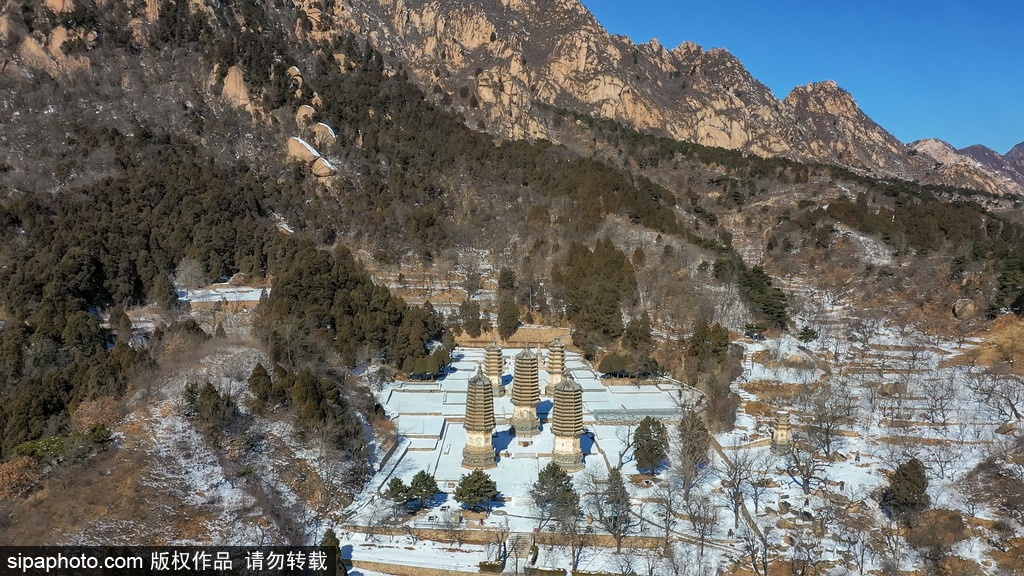Yinshan Pagoda Forest is the National Park of China, one of “Eight Great Sights of Yanjing” during Ming and Qing Dynasties.
It's composed of a group of towering brick-carved pagodas, which include a shu-mi-tso base, a body structure carved with doors, windows and Buddhists, layered eaves and a spire. Some could be as tall as a dozen m, some as low as 3 m. The historical forest is in an orderly arrangement with scattered buildings of various heights.

The Yinshan Mountains got its name from the snow and ice covering it in winter. It is also known as the Iron-wall Silver Hills because of its iron-looking precipices. It was known as one of the eight most beautiful scenic spots in Beijing during the Ming and the Qing dynasties. The mountains have three peaks thrusting into the clouds. Of the three, the middle peak outstands the other two with an altitude of 726.81 meters above the sea level.

In the Tang Dynasty, some temples including the Huayan Temple were built here. During the years of the reign of Emperor Xianzong of the Tang Dynasty (806-820 A.D.), Deng Yinfeng, a famous monk, practiced Buddhism here. During the years of the reign of Emperor Shouchang of the Liao Dynasty (1095-1101 A.D.), Man Gong, a Zen master, created the Temple of Precious Rock here. Later, three other Zen masters came here to practice and preach Buddhism. During the years of the reign of Emperor Tianhui of the Jin Dynasty (1123-1135 A.D.), Hai Hui (~1145 A.D.), a reputed monk of the Yunmen Sect, came and settled down here. In the third year of the reign of Emperor Tianhui, he expanded the temple into a complex of halls arranged in three rows and named it the Great Temple of Perpetual Holiness. Later, five multi-eave brick pagodas were built between the vermilion steps of the halls to hold the sariraof reputed monks of the Jin Dynasty.



